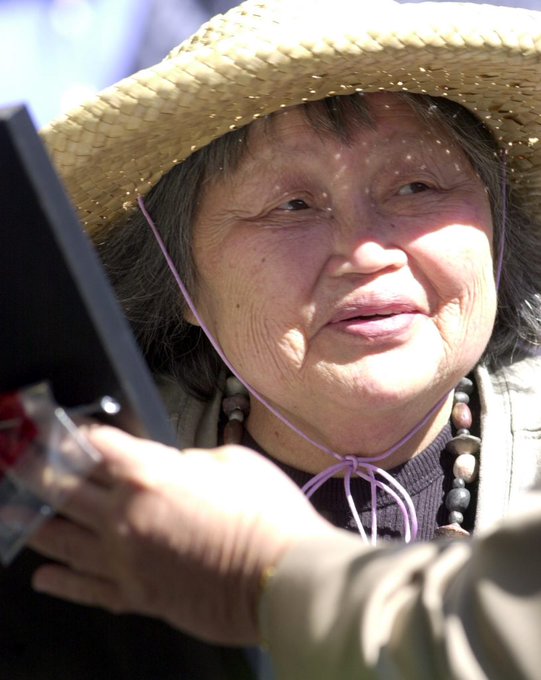
Ruth Asawa, a famed sculptor known for her intricate, elegant wire designs and the daughter of Japanese immigrants, is the subject of a Google Doodle in honor of Asian-American Pacific Islander month in the United States.
Her full name was Ruth Aiko Asawa. From the horrors of internment camps to the fight against prejudice, Asawa overcame many hardships, but she created great art.
Google calls her an “acclaimed Japanese-American artist and educator who overcame great adversity throughout her journey, ultimately exhibiting her intricate wire sculptures and works on paper in museums around the world.”
Here’s what you need to know:
1. Ruth Asawa’s Family Spent Time in Internment Camps & She Used That Experience to Create Art
One of America’s most shameful episodes in history were Japanese internment camps during World War II. Ruth Asawa, who was born in 1926 (and died in 2013), was the daughter of Japanese immigrants who spent six months in an internment camp, according to Artnet.com.
However, she used the horrific experience to create art, drawing and painting, the site explains, and, later, she continued her artistic journey in Mexico City, where she studied Spanish and Mexican art when the war was over, Artnet reports.
Her parents were named Umakichi and Haru Asawa, and she was born in California. “I can see glimpses of my childhood in my work,” she said, according to Densho Encyclopedia. “We used to make patterns in the dirt, hanging our feet off the horse-drawn farm equipment. We made endless hourglass figures that I now see as the forms within forms in my crocheted wire sculptures.”
2. Asawa Overcame Prejudice While Trying to Earn a College Degree

A Ruth Asawa design
Asawa’s life journey took her to Milwaukee, Wisconsin, Artnet reports, the Milwaukee Teachers College. The site says she endured prejudice there and “was told that she couldn’t complete her degree” as a result.
According to Google, “she was prevented from doing her student teaching because of her Japanese heritage.”
Rather than giving up, she continued her education at Black Mountain College in North Carolina.
According to Interior Design, her work was later revisited and she was not appreciated as much early in her career as she has been later on. The site reports that her work was stereotyped as “craft-based and feminine” at first.
3. Asawa Was Known for Biomorphic Wire Forms
Ruth Aiko Asawa was many things. According to Densho Encyclopedia, she was a renowned “sculptor, painter, and printmaker.”
The site reports that she was especially known for her “biomorphic wire forms and public art installations.” She was also a supporter for art education in the public schools.
Interior Design says she studied under Josef Albers and Buckminster Fuller. She saw art, the site says, as “exploration and experimentation.” Google reports that Asawa adapted “methods she learned in Mexico, where people made wire baskets for domestic use.” According to Google, “Asawa used similar techniques to create the looped wire sculptures she became known for.”
4. Ruth Asawa’s Designs Were Inspired by Plants

A Ruth Asawa design.
Ruth Asawa’s distinctive sculptures were inspired by plants.
When she was asked what inspired her, she said this, according to Google: “Plants, the spiral shell of a snail, seeing light through insect wings, watching spiders repair their webs in the early morning, and seeing the sun through the droplets of water suspended from the tips of pine needles while watering my garden.”
According to Brittanica, she was married to architect Albert Lanier for 59 years until his death and had six children with him.
5. Asawa Was an Advocate of Public Arts Education
Asawa believed in the importance of arts education in the public schools. According to Google, she advocated for the creation of a public arts high school. It’s called the Ruth Asawa San Francisco School of the Arts.
Google notes that the city of San Francisco has named a day after Asawa – February 12. She believed, Google reports, that “art will make people better.”
According to OAC, Asawa’s proficiency in art shone through at an early age. “She won a school art competition with her drawing of the Statue of Liberty,” the site reports. A teacher who believed in her helped Asawa, perhaps leading to her lifelong belief in the importance of art in the schools.



